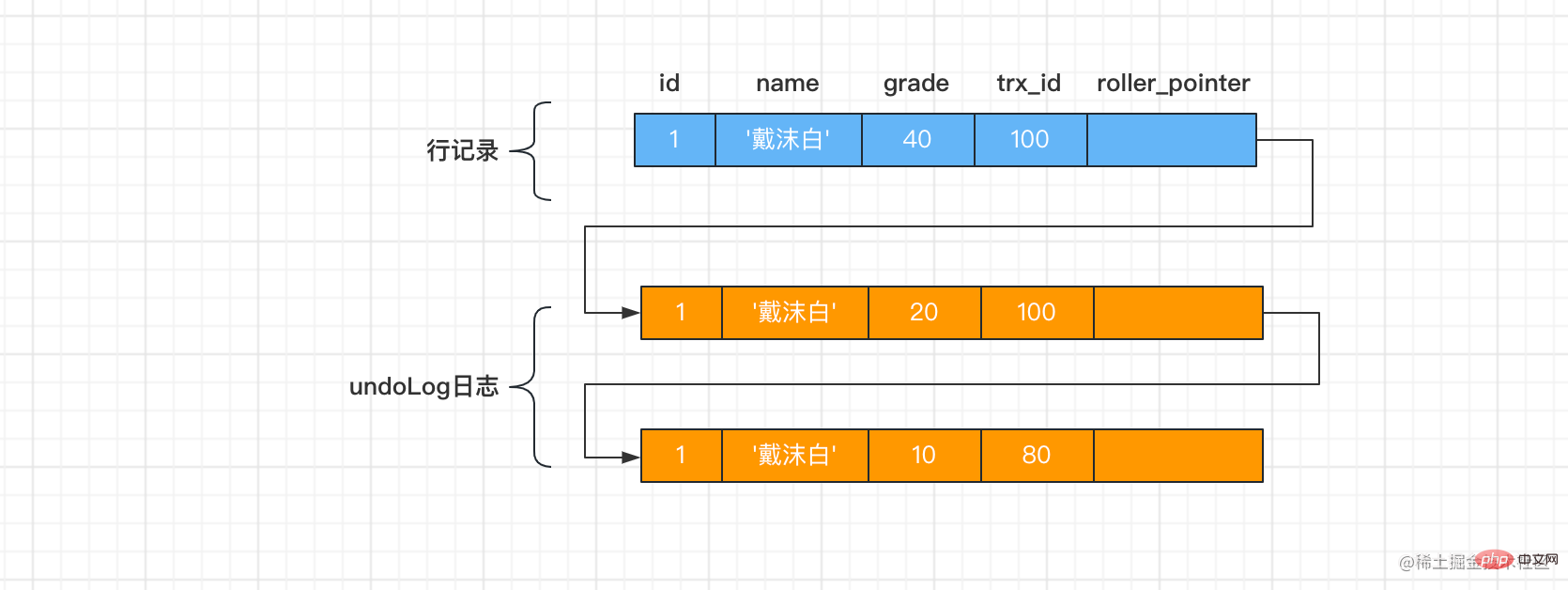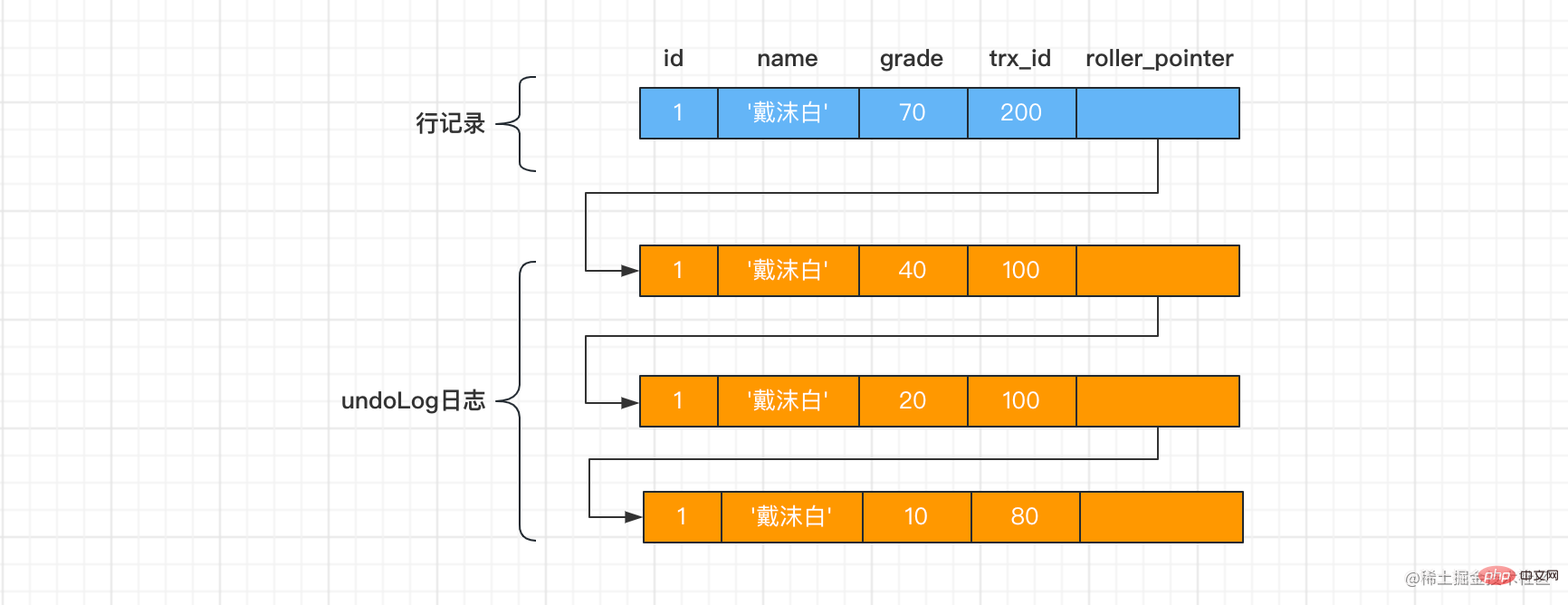Home >Database >Mysql Tutorial >An article briefly analyzing how MySQL solves the phantom reading problem
An article briefly analyzing how MySQL solves the phantom reading problem
- 青灯夜游forward
- 2023-02-06 20:14:162200browse
How does MySQL solve the phantom read problem? The following article will let you talk about this issue. Let’s read the article with questions!

Transaction characteristics (ACID): Atomicity (Atomicity),Isolation(Isolation), Consistency(Consistency) and Persistence
Isolation Level: READ UNCOMMITTED(READ UNCOMMITTED), READ COMMITTED(READ COMMITTED), Repeatable Read (REPEATABLE READ), Serializable (SERIALIZABLE)
- READ UNCOMMITTED
Under the isolation level,dirty reads,non-repeatable readsand ## may occur. #phantom readproblem READ COMMITTED - Under the isolation level,
non-repeatable readandphantom readproblems may occur, but they are not possibleDirty readproblem REPEATABLE READ - Under the isolation level,
phantom readproblem may occur, butdirty read# cannot occur ## andNon-repeatable readproblemsSERIALIZABLEUnder the isolation level, various problems cannot occur -
For MySQL InnoDB The default isolation level supported by the storage engine isREPEATABLE-READ (repeatable)
REPEATABLE-READ (repeatable) It is impossible to prevent phantom reads, but we all know that the MySQL InnoDB storage engine solves the problem of phantom reads, so how does it solve it? 1. Row format
Before entering the topic, we first have a general understanding of what the row format is. This will help us understand the following MVCC. The row format is The way row records in the table are stored on disk, Innodb
storage engine has a total of 4 different types of row formats:compact, redundant, dynamic , compress; Although there are many line formats, they are basically the same in principle, as follows, the compact line format: As can be seen from the figure, A complete record can actually be divided into two parts: recorded additional information and  recorded real data
recorded real data. recorded additional information are respectively changes. Long field length list , NULL value list and record header information , and recorded real data In addition to our own defined columns, MySQL will Add some default columns to each record. These default columns are also called hidden columns. The specific columns are as follows:
| Description | ||||||||||||||||||||||||||||||||||||||||||||||
|---|---|---|---|---|---|---|---|---|---|---|---|---|---|---|---|---|---|---|---|---|---|---|---|---|---|---|---|---|---|---|---|---|---|---|---|---|---|---|---|---|---|---|---|---|---|---|
| Row ID, uniquely identifies one Record | transaction_id | |||||||||||||||||||||||||||||||||||||||||||||
| Transaction ID | roll_pointer | |||||||||||||||||||||||||||||||||||||||||||||
| Rollback pointer |
| Time number | trx 100 | trx 200 | |
|---|---|---|---|
| ① | BEGIN; | ||
|
| BEGIN;BEGIN; | ||
|
##update person set grade =40 where id =1; |
|||
|
##⑥ |
|||
| ##COMMIT; | ⑦ |
||
| ##update person set grade =70 where id =1; |
⑧ |
SELECT * FROM person WHERE id = 1; | |
| COMMIT; |
? |
COMMIT; | |
| trx 100 the transaction was executed Submit, the version chain recorded in the id=1 line is as follows: |
, the transaction commit was executed, the version chain recorded in the id=1 line As follows:
 At time ⑤, transaction
At time ⑤, transaction trx 100 will first generate a
select statement. #, the content of the
statement. #, the content of the
list of ReadView is [100, 200], min_trx_id is 100,max_trx_id is 201, creator_trx_id is 0, at this time, select the visible record from the version chain, and traverse the version chain from top to bottom: Because grade=40, the value of trx_id is 100, which is in m_ids, so the record is not visible. Similarly, the record with grade=20 is also invisible. Continue traversing down, grade=20, trx_id value is 80, which is less than min_trx_id value 100# in ReadView ##, so this version meets the requirements, and records with level 10 are returned to the user. In time ⑧, if the isolation level of the transaction is READ COMMITTED, a separate ReadView will be generated, the ## of the ReadView The content of the #m_ids list is
, min_trx_id is 200, max_trx_id is 201 , creator_trx_id is 0. At this time, select the visible record from the version chain, and the version chain is traversed from top to bottom: because grade=70, the value of trx_id is 200, in m_ids, so the record is not visible, continue to traverse, grade=40, trx_id value is 100, It is less than the min_trx_id value 200 in ReadView, so this version meets the requirements, and a record with level 40 is returned to the user. In time ⑧, if the isolation level of the transaction is REPEATABLE READ, in time ⑧, a ReadView will not be generated separately, but the one of time 5 will be used. ReadView, so the level returned to the user is 10. The result of the two selects is the same. This is the meaning of repeatable reading.
3. Summary By analyzing the detailed explanation of MVCC, it can be concluded that based on MVCC, under the RR isolation level, it is very easy to solve phantom reading Problem, but we know that select for update generates current reads and is no longer snapshot reads. In this case, how does MySQL solve the
problem? Based on time issues (it does take a lot of time to organize and draw pictures), I will give the conclusion first, and then analyze how MySQL solves the phantom reading problem under the current reading situation:
Current reading: Use Next-Key Lock (gap lock) to lock to ensure that phantom reading does not occurHow gap lock is used in the current reading situation If you want to solve the problem of phantom reading, interested friends can add a follow and like [Related recommendations:
- ]
The above is the detailed content of An article briefly analyzing how MySQL solves the phantom reading problem. For more information, please follow other related articles on the PHP Chinese website!



 The
The  undo log
undo log